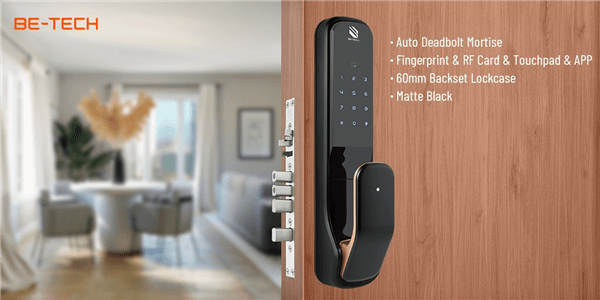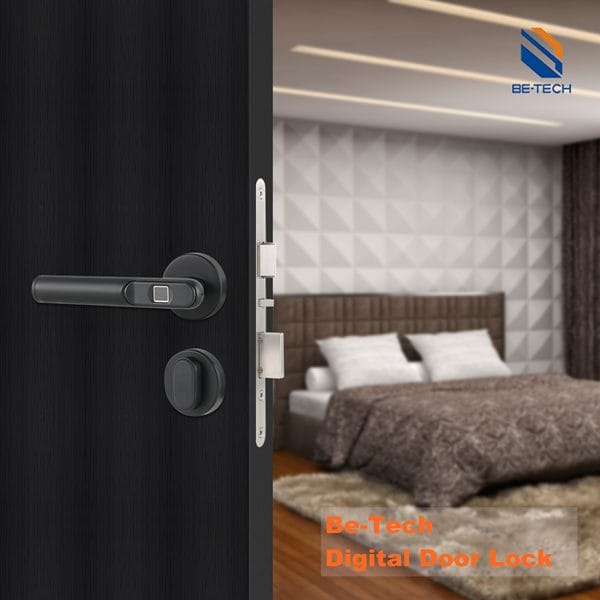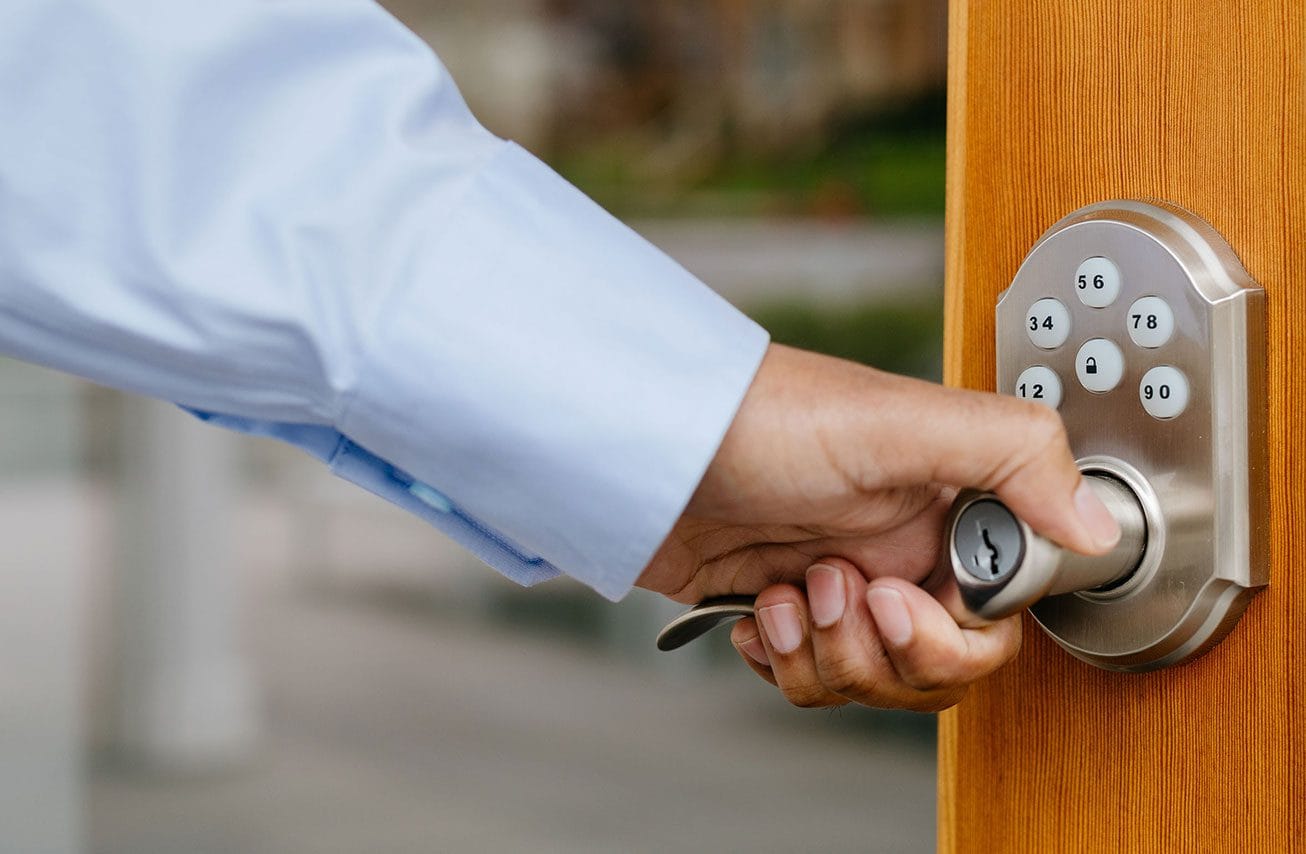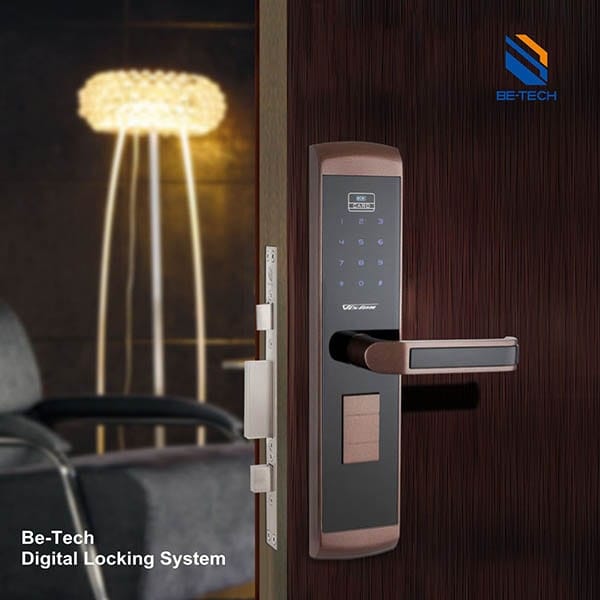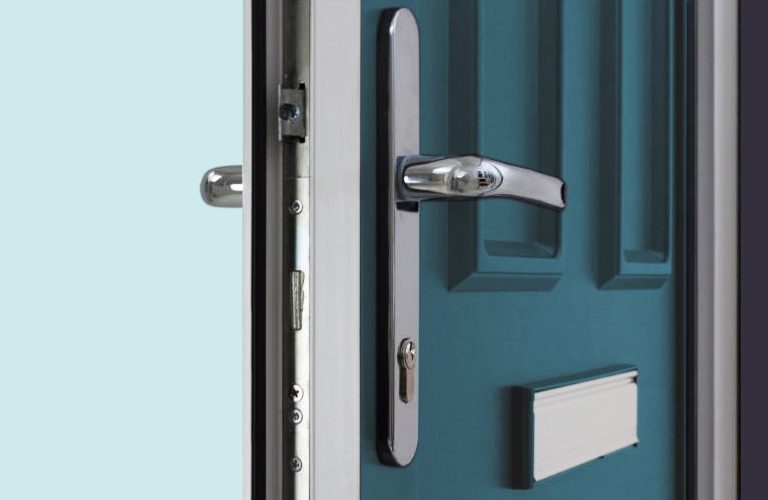Hotel door lock dimensions play a crucial role in ensuring guest safety, operational efficiency, and aesthetic harmony in hospitality environments. As we enter 2024, understanding these specifications is more important than ever for architects, designers, and contractors working on hotel projects. This guide provides an in-depth look at standard hotel door lock dimensions, covering ANSI, AUS, and EURO standards, to help professionals make informed decisions for their projects.
Why Hotel Door Lock Dimensions Matter
The importance of precise door lock dimensions extends far beyond mere functionality:
Guest Safety and Security: Correctly sized locks are the first line of defense against unauthorized access, directly impacting guest safety.
Smooth Operation and Durability: Locks that fit properly operate smoothly and experience less wear and tear, extending their lifespan and reducing maintenance costs.
Aesthetic Integration: Consistent dimensions ensure locks seamlessly blend with hotel design and door styles, maintaining the desired visual appeal.
Compliance with Building Codes: Adhering to standard dimensions is often necessary to meet building regulations and fire safety codes.
Cost-Effectiveness: Standardized dimensions streamline procurement processes and can lead to significant cost savings over time.
| Aspect | Impact of Correct Dimensions |
|---|---|
| Safety | Enhanced guest protection |
| Durability | Longer lock lifespan |
| Aesthetics | Seamless design integration |
| Compliance | Meeting regulatory requirements |
| Cost | Reduced long-term expenses |
Key Measurement Points for Hotel Door Locks
Understanding critical measurement points is essential for selecting and installing hotel door locks effectively. Each measurement significantly impacts security and functionality:
Backset
- The distance from the door edge to the center of the lock cylinder bore is crucial for alignment with strike plates. Common backsets are 2-3/8″ (60mm) or 2-3/4″ (70mm). Selecting the correct backset ensures proper installation and operation.
Cross Bore
- This is the diameter of the hole drilled for the lock body, typically 2-1/8″ (54mm) for most cylindrical locks. Accurate cross bore sizing is vital for accommodating various lock types securely.
Edge Bore
- Measuring 1″ (25mm), this hole allows the latch mechanism to function smoothly. Proper edge bore dimensions facilitate effective latch operation.
Latch Bolt
- The length of the bolt extending into the strike plate is commonly 1/2″ (12.7mm) or 3/4″ (19mm). A correctly sized latch bolt enhances security by ensuring a snug fit within the strike plate.
Deadbolt
- If applicable, this includes both length and diameter, often around 1″ (25mm). A robust deadbolt adds an extra layer of protection against unauthorized entry.
Door Thickness
- Standard thicknesses range from 1-3/8″ (35mm) to 1-3/4″ (44mm). Ensuring compatibility with these dimensions is essential for effective lock performance.
Strike Plate Dimensions
- Typically measuring 2-1/4″ x 1-1/4″ (57mm x 32mm), proper strike plate dimensions prevent misalignment issues that can compromise security.
By understanding these key measurements, hoteliers can select locks that enhance both safety and usability within their establishments. For further guidance on installation best practices or choosing suitable lock types, explore our comprehensive resources on hotel security solutions.
Standard Hotel Door Lock Dimensions
Understanding hotel door lock dimensions is essential for ensuring security, compliance with regulations, and operational efficiency within hospitality environments. This guide provides a detailed overview of standard specifications across various regions:
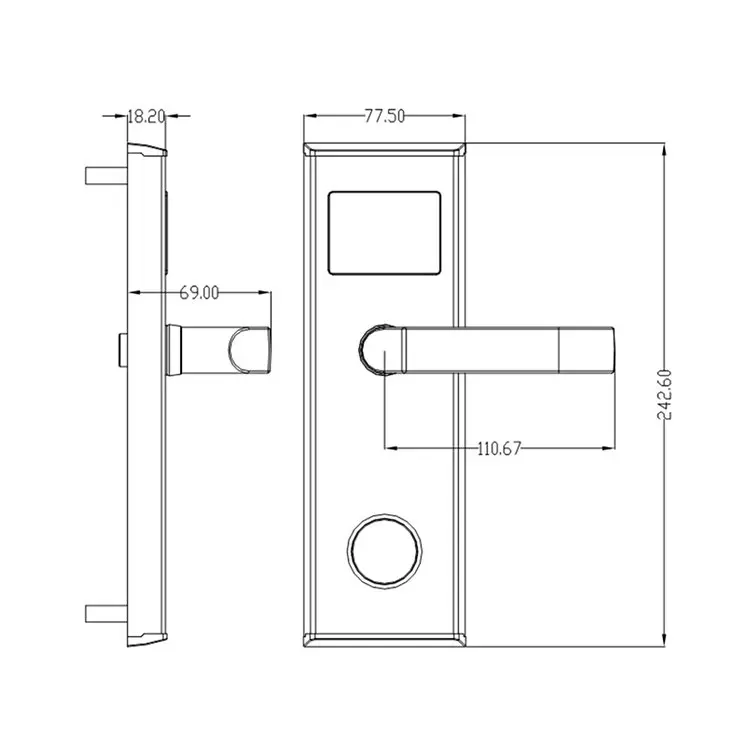
ANSI Standards (American National Standards Institute)
ANSI standards are widely adopted in North America and significantly influence global lock designs:
Cylindrical Locks:
Backset: 2-3/8″ (60mm) or 2-3/4″ (70mm)
Cross Bore: 2-1/8″ (54mm)
Edge Bore: 1″ (25mm)
Latch Bolt Throw: Minimum of 1/2″ (12.7mm)
Mortise Locks:
Backset: 2-3/4″ (70mm)
Lock Body Dimensions: 6″ x 4-1/4″ (152mm x 108mm)
Faceplate Dimensions: 8″ x 1-1/4″ (203mm x 32mm)
Latch Bolt Throw: Minimum of 3/4″ (19mm)
AUS Standards (Australian Standard)
Australian standards present unique specifications that differ from ANSI:
Backset: Commonly set at 60mm (2-3/8″)
Door Thickness: Ranges from 35mm to 50mm (1-3/8″ to 2″)
Latch Bolt Throw: Minimum of 12mm (1/2″)
EURO Standards (European Standard)
European standards vary slightly from ANSI and AUS:
Backset Options: Either 55mm (2-1/8″) or 70mm (2-3/4″)
Lock Case Size: Center-to-center measurement for handle and cylinder is typically set at 72mm (2-13/16″)
Door Thickness Range: Between 40mm to 45mm (1-9/16″ to 1-3/4″)
Importance of Correct Dimensions
Choosing the right door lock dimensions is vital for several reasons:
Ensures guest safety by preventing unauthorized access.
Enhances operational efficiency by ensuring smooth functionality and reducing wear over time.
Understanding these specifications helps architects, designers, and contractors make informed decisions for their projects while ensuring compliance with building codes.
Considerations for Choosing Hotel Door Lock Dimensions
When selecting door locks for hotels, several key factors must be considered to ensure safety, compliance, functionality, and aesthetic appeal:
Door Type and Thickness: Different types of doors—such as fire-rated or exterior doors—require specific lock dimensions to meet safety standards and security regulations. For example, fire doors often necessitate locks compliant with local fire codes.
Security Requirements: High-security areas within hotels—like executive suites or safe deposit box rooms—may need locks equipped with longer deadbolts or reinforced strike plates to effectively deter unauthorized access.
Accessibility Compliance: Ensure that lock dimensions adhere to Americans with Disabilities Act (ADA) guidelines, including lever handle height (typically between 34-48 inches) and ease of operation for individuals with disabilities.
Aesthetics: The size and style of the lock should complement the overall design of both the door and the hotel’s ambiance. A modern hotel may opt for sleek, minimalistic locks that align with contemporary decor.
Smart Lock Integration: If implementing smart locking systems, verify compatibility with existing door preparations. This includes checking that door thickness accommodates smart locks without compromising security features.
Cost Considerations: Evaluate the long-term costs associated with different locking systems—including installation costs, maintenance needs, and potential upgrades—to ensure budget alignment without sacrificing quality.
Technological Advancements: Stay informed about emerging technologies in hotel locking systems, such as mobile access solutions or biometric options, which can enhance guest convenience while improving security measures.
This comprehensive approach ensures that hoteliers make informed decisions when selecting door locks that not only meet regulatory requirements but also enhance guest satisfaction through improved security features and aesthetic integration.
Case Studies and Examples
Luxury Resort Upgrade
A 5-star resort in Miami faced challenges when upgrading to smart locks. The existing doors had non-standard backsets of 2-1/2″ (63.5mm). The solution involved custom-manufactured smart locks to fit the unique dimensions, highlighting the importance of accurate measurements in retrofit projects.
Boutique Hotel Chain Standardization
A boutique hotel chain with properties across Europe and North America implemented a standardization program for door hardware. By selecting locks that met both ANSI and EURO standards, they simplified procurement and maintenance across their diverse portfolio.
Conclusion
Selecting the right hotel door lock dimensions is a critical aspect of ensuring security, functionality, and aesthetic harmony in hospitality environments. By understanding standard dimensions and considering key factors like door type, security requirements, and accessibility needs, professionals can make informed decisions that contribute to the success of their hotel projects.
As we move further into 2024, staying informed about the latest standards and innovations in hotel door lock technology will be crucial. Whether you’re planning a new construction or a renovation project, partnering with reputable lock manufacturers and suppliers ensures access to high-quality products that meet industry standards and specific project needs.
For personalized guidance on selecting the perfect door locks for your hotel project, don’t hesitate to reach out to our team of experts. We’re here to help you navigate the complexities of hotel security and create a safe, welcoming environment for your guests.


